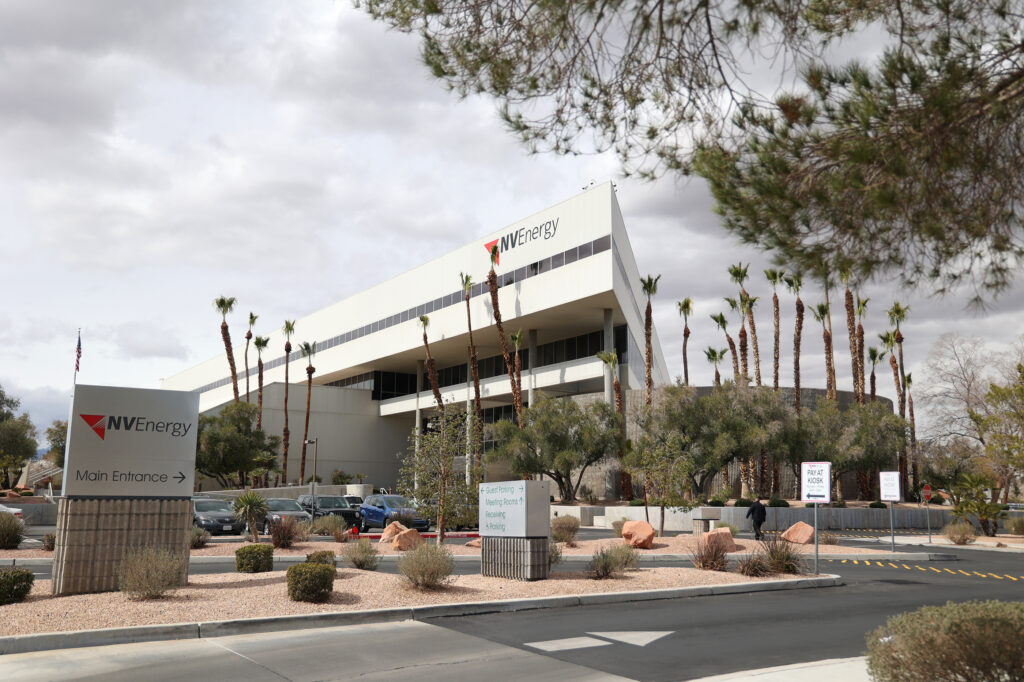(Photo: Ronda Churchill/Nevada Current)
Researchers estimate that about one million households in the United States are disconnected from electricity due to nonpayment each year, but the exact number of households in Nevada facing power shut offs amid heat waves is largely unknown.
There should be a bill for that, a panel of state lawmakers agreed during a recent committee meeting.
Nevada does not require utilities to disclose the number of customers they disconnect, leaving little transparency of the magnitude of the problem. NV Energy, a regulated utility monopoly with more than a million captive customers, has shown little interest in publicly sharing the number of disconnected customers.
Advocates argue that public data on energy disconnections throughout the state would allow researchers, community-based organizations, and policymakers to identify patterns of disconnection and support communities that are more vulnerable to service disconnection.
“Both the reporting and the associated demographics would help us give a better picture of what’s going on in terms of people’s ability to pay their energy bills each month,” said Olivia Tanager, the director of the Sierra Club Toiyabe Chapter in Northern Nevada.
The Nevada Legislature’s Joint Interim Standing Committee on Growth and Infrastructure unanimously voted to take up the bill draft request in August. Bill draft requests are not official bills, they are requests by lawmakers for a draft of the proposed bill they can further amend and discuss during the legislative session. The bill was recommended by the Sierra Club Toiyabe Chapter.
The proposed bill would direct the Public Utilities Commission (PUCN) of Nevada to require Nevada energy providers to publicly report power disconnections, the location of the disconnection, and household demographics to utility regulators.
NV Energy’s recent request to increase basic service charges in Northern Nevada pushed advocates to recommend the bill, said Tanager. In June, NV Energy asked utility regulators to let the energy provider increase its shareholder return by tripling the basic monthly service charge for Northern Nevada residents from $16.50 to $45.30.
The PUCN has regulatory authority to approve or deny rates charged by electric, gas, and water utilities. But data on how those rate increases affect households, and whether they can pay or not, is largely private.
“It’s just really difficult to get that information in Nevada,” Tanager said. “Folks can request data on shut offs, but the PUCN doesn’t have to grant that request, nor does NV Energy have to make those records available publicly.”
While the energy company is not required to share the number of disconnected customers, and has previously said it “does not share this type of data publicly” but “works diligently with customers and makes every effort to avoid disconnecting power.” NV Energy did not respond to a request for additional comment late last week.
The utility is required to disclose the debt from uncollected accounts they need remaining customers to cover. Limited data reviewed by the Current last year found that NV Energy debt from unpaid accounts — which NV Energy can pass on to customers — has consistently grown year to year, and totaled more than $13 million in uncollected accounts from their more than one million customers in 2022.
“We see this as an equity issue and something that should be made available to the public so that people can have this information and make the decisions that are best for themselves in their community,” Tanager said.
According to the most recent data from the U.S. Energy Information Administration, 1 in 4 American households experience some form of energy insecurity – an inability to meet household energy needs – each year, with little improvement over the past decade.
Nationally, Black and Hispanic households are twice as likely as white households to reduce or forgo basic necessities in order to pay an energy bill, and are statistically more likely to have their power disconnected, according to a 2023 report on electric utility disconnections by the Congressional Research Service.
Congress has also gained an interest in determining the scale and scope of electricity disconnections in recent years. Proposals to address electricity affordability and disconnections were included in multiple pandemic relief bills introduced during the final two years of Donald Trump’s presidency, but none were enacted.
Last year, Congress gave the U.S. Energy Information Administration $3 million in funding to begin collecting monthly data on utility disconnections. However, only 25 states require energy providers to report disconnection data publicly, making comprehensive national data difficult to obtain, according to the Congressional Research Service.
Tanager, the director of the Sierra Club Toiyabe Chapter, said the full scope of disconnections in Nevada households can’t be evaluated or adressed without public data.
“Ultimately, without the information, we just don’t know. If we have hundreds and hundreds of people each month who are having their lights turned off due to the inability to pay, that’s a problem that we need to address, and decision lawmakers need to know about. Without that knowledge, it really limits our ability to effectively respond and support our neighbors,” Tanager said.

